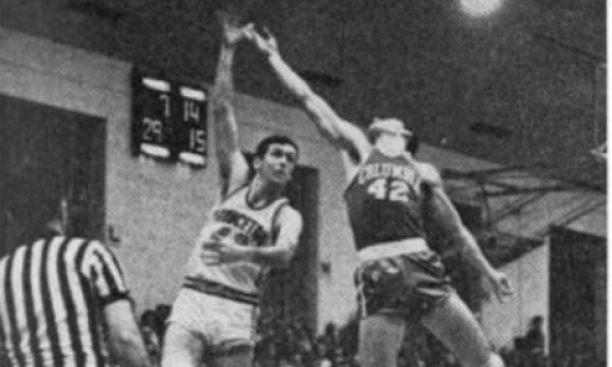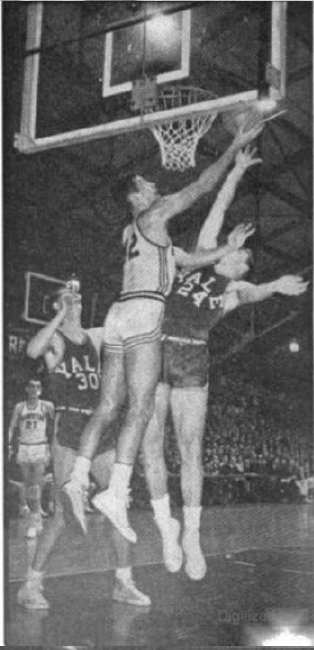






More even than Pete Carry’s sports column on page 14, the cover photograph and this spread epitomize the peculiar quality of Princeton’s late basketball season: All-American All-Olympic, all-everything Bill Bradley as a one-many army confounding whole platoons of defenders.
One of the most unusual things about this modest 20-year-old Chapel Deacon is the way he happened to come to Princeton. He had already received an athletic scholarship at one of the big basketball schools when at the last minute he decided, with thoughts of a career in the foreign service, to attend the Woodrow Wilson School of Public and International Affairs, even though at Princeton he would receive no aid because of the affluence of his father, a bank president in Crystal City, Missouri. Actually now he is enthusiastically majoring in the History Department with a 2nd group average, having just completed his junior departmental paper on “The Red Scare of 1919-20” and intending to write a senior thesis on “Nativism in American History.”
There is a curious parallel between his case and that of another distinguished athlete and captain-elect, fullback Cosmo Iacavazzi. He too had an All-American rating in high school and had decided on another university—when at the last minute he heard of the eminence of our Department of Aeronautical Engineering, his chosen profession. Now he similarly maintains an honors average among the wind tunnels and computers of the Forrestal Research Center.
“Tut, tut, child,” said the Duchess to Alice. “Everything’s got a moral if only you can find it.” In the old days the faculty, with its power of “ineligibility,” was looked upon as the natural enemy or virtuous athletes, as summed up in President James McCosh’s acid remark to a group of sport enthusiasts: “I am more interested in the gymnastics of the mind.” (We once taught at one of the great football factories of the Midwest, where “spring” practice started on February 15, and football players—known as “the apes”—were carefully shielded from the rigors of the regular faculty by a physical education major which awarded them academic credit for courses like “Recreational Leadership” and such.) Now by a wonderful irony Princeton recruiters use the faculty not as threat but as bait!—ED.
This was originally published in the April 21, 1964 issue of PAW.
